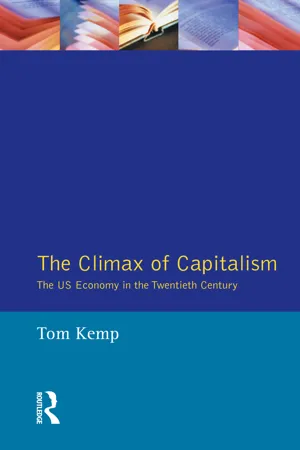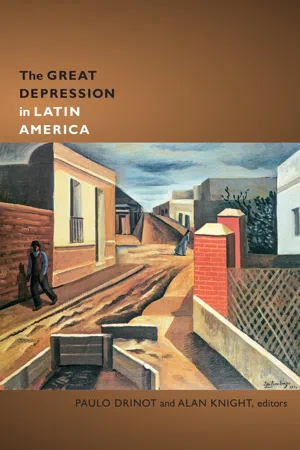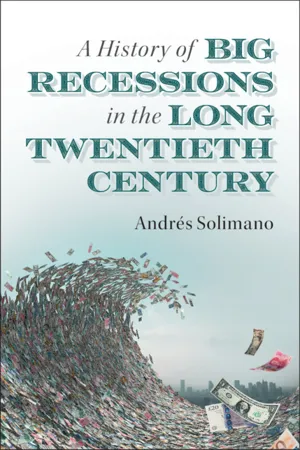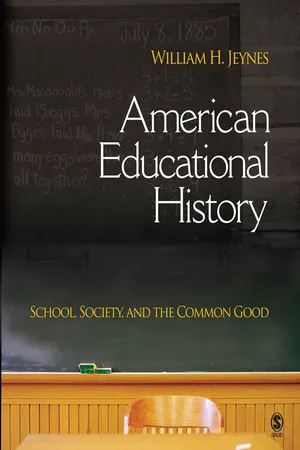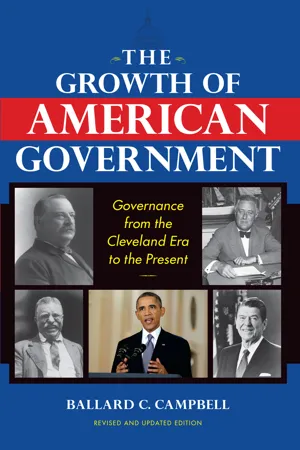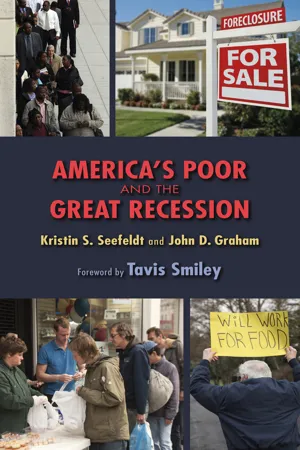History
Impact of the Great Depression
The impact of the Great Depression was profound, leading to widespread unemployment, poverty, and economic hardship. It caused a significant decline in industrial production and international trade, and led to social and political upheaval in many countries. The Great Depression also prompted governments to implement new economic policies and social welfare programs to address the crisis.
Written by Perlego with AI-assistance
Related key terms
1 of 5
8 Key excerpts on "Impact of the Great Depression"
- eBook - ePub
- Martin Kitchen(Author)
- 2019(Publication Date)
- Routledge(Publisher)
7 THE Impact of the Great Depression 1873–1895The Political Consequences of the Depression
As historians compile and analyse the statistical data of the period, the picture of the Great Depression becomes ever more differentiated, complex and contradictory, to the point where it has been seriously suggested that the term ‘Great Depression’ is without any analytical value. As far as the experience of Germany is concerned, the simple dating of the Great Depression from 1873 to 1896, with a first period to early 1879, a brief period of modest recovery to January 1882 and a second period of depression to 1896, has some value as a means of sorting out the available material into manageable periods. It tends, however, to magnify the effects of the depression, to overlook the degree to which many key factors in the period such as the effects of overseas trade, changes in the terms of trade or the fall in prices were set in motion before the onset of the depression. But in psychological terms there can be no doubt that there was indeed a depression. The economic hangover after the heady days of the foundation of the Reich plunged businessmen into the darkest gloom. Contemporaries were unanimous in their opinion that times were bad and were getting worse, and that industrial capitalism fluctuated between times of prosperity, when the workers made outrageous demands and the prices of raw materials rose, and depression, when business was forced to cut its own throat with price reductions, production restrictions and low profits.In large part this was due to the exceptional performance of the economy in the boom years since 1848. Temporary set-backs in 1857 and 1866 were only short interruptions in almost thirty years of high profits and rapid expansion. The depression showed that industrial capitalism was not necessarily synonymous with endless expansion and boundless prosperity. Nor was the structure of the German economy an unchanging and immutable fact, for it had to make major and often painful adjustments in order to accommodate itself to the changing world economic situation. - eBook - ePub
The Climax of Capitalism
The U.S. Economy in the Twentieth Century
- Tom Kemp(Author)
- 2014(Publication Date)
- Routledge(Publisher)
A decade of crisis: 1929—1939By its unexpectedness, its scale and its duration, the Great Depression of the 1930s had a traumatic effect on all sections of American society. Coming as a sequel to several years of prosperity which had led business spokesmen and leading economists to forecast a new era of crisis-proof expansion, it proved to be the longest and deepest in history.For three and a half years following the Wall Street crash, the economy continued on a downward plunge, ruining millions of small businessmen and farmers, condemning one quarter of the labour force to unemployment and almost destroying the banking system. In what Americans proudly assumed was the richest country in the world, the living standards of many unemployed workers and poor soil farmers fell to 'third world' levels. The blow to the 'American dream' was so sudden and severe that the reaction of many was one of disbelief and passivity rather than of anger. There was no sharp turn to the left by a segmented working class, no mass middle-class support for a far-right saviour - though both tendencies were later to appear.The explanation of the Great Depression poses many problems for economists and it is not surprising that no consensus should exist. Many were, and still are, reluctant to attribute it to some organic weakness of capitalism, looking rather to extraneous circumstances, mistakes in government policy or wrong decisions by the monetary authorities.The Greatest Depression
Most accounts of the Depression begin with the Wall Street crash, so that the beginning of the Depression can be exactly dated to 24 October 1929. It is unlikely that the crash would have been followed by such devastating consequences had there not been about this time the coming together of various factors making for a slump. The crash, while particularly severe, was a financial panic of a classic type familiar in the financial history of European countries as well as the United States. Its form was a rush into liquidity by those holding shares, and later, other types of paper - bonds, securities, bills of exchange bringing prices crashing down. In the previous months share prices had been rising at an extraordinary rate, the result of excessive speculation in which large numbers of people, including many newcomers to stock-market transactions, had been participating. In such speculative manias, a time comes when confidence in the continued upward movement of stock-market prices begins to break. Some feel the urge to sell before the fall begins, or become overcommitted and have to sell to settle payments elsewhere. Once selling generates a fall there is a good chance that the movement will spread until it becomes an avalanche. Weaknesses and frauds are exposed, and it becomes virtually impossible to reverse the trend. - eBook - ePub
American Education
A History
- Wayne J. Urban, Jennings L. Wagoner, Jr., Milton Gaither(Authors)
- 2019(Publication Date)
- Routledge(Publisher)
Thus, for many Americans, the Great Depression only intensified their previous suffering, while for others it provided a bitter introduction to economic deprivation. 2 The Personal Experience of the Depression It is hard to recreate the despair that pervaded the lives of many Americans in the 1930s. Statistics provide a startling, but relatively impersonal, look at the situation. Gross national product declined by almost one-half in the early 1930s, sinking from $103 billion to $56 billion. A similar decline occurred in personal income, and an even larger decline took place in corporate profits and stock prices. The number of bank failures increased astronomically, and the impact of these failures was felt in turn by the affluent leaders of the banking industry, bank employees, and bank depositors. 3 Statistics alone, however, cannot begin to communicate the levels of shock, pain, and disbelief that scarred the adults and young people who lived in and through the Great Depression. Oral histories have provided some of the most vivid memories of the depression years. Of these, one compilation stands out: Studs Terkel’s volume, Hard Times. In its pages, one finds a series of riveting and disturbing accounts of life in the 1930s. Terkel’s interviewees relate the personal circumstances and stories of those who were unemployed, those who stood in bread and soup lines, and those who became hobos and rode the rails in search of a job and a meal. These individuals experienced the utter destitution that characterized those years for so many. 4 Utter destitution, however, was not the only experience of those years. Prosperous and middle-class families also suffered, as the following excerpt from Terkel illustrates. Figure 9.1 A man at the “Junk Market” on Houston St. in New York City trying to sell some possessions during the Great Depression. Photograph by Samuel H - eBook - PDF
- Paulo Drinot, Alan Knight, Paulo Drinot, Alan Knight(Authors)
- 2014(Publication Date)
- Duke University Press Books(Publisher)
In the more integrated and har-monious society portrayed by proponents of this argument, the economic and social transformations brought about by the growth of manufacturing play a minor part in the emergence of Peronism. Politics and ideology, rather The impacT of The Depression on arGenTine socieTy 25 than social and economic change, are the most important explanatory vari-ables. According to this view, the authoritarian, nationalist ideas dominant in the armed forces and the Catholic Church, the political and ideological impact of World War II, the mobilization of the center and left political parties and the middle classes against the military that took power in June 1943, and the besieged military regime’s struggle for survival in 1944–45 were developments even more important than the upsurge of working-class activism in shaping the political scenario that brought Colonel Perón to power.3 Because of their emphasis on either change or continuity, exclusion or integration, these two interpretations of the Great Depression years are often regarded as alternative narratives. However, important divergences stem from the fact that they focus on two distinct groups: the industrial workers in the first case, and the urban middle classes and the more inte -grated and prosperous segments of the urban popular classes in the second. In fact, this chapter argues that these interpretations actually explore two parallel and (to some extent) complementary realities, both of equal impor-tance for understanding how Argentina developed during the 1930s and what was the political legacy of the Great Depression. In order to achieve a better understanding of the 1930s, therefore, these two narratives need to be brought together. The first section of this chapter briefly describes the Impact of the Great Depression. Then, the chapter looks into how the slump affected the middle classes and the most integrated and prosperous sectors of the urban workers. - Andrés Solimano(Author)
- 2020(Publication Date)
- Cambridge University Press(Publisher)
61 4 The Great Depression of the 1930s 4.1 Introduction The precise causes of the Great Depression of the early 1930s, the worst slump of the twentieth century, remain somewhat of an unresolved mys- tery in economic analysis and history. It is apparent that while there is not a single cause of the Great Depression – or a single country responsible for the big international slump – we can make the following list of factors that did contribute to the Great Depression: (i) the stock market crash of 1929 in the United States; (ii) the decline in terms of trade and capital inflow for exporters of primary products in Latin America and Australia that started in 1928 or before; (iii) bankruptcies of banks in the early 1930s in America, Austria, and Germany; (iv) deflationary policies pursued by central banks in the context of the gold standard; (v) the timing of abandonment of the gold standard (the evidence shows that early-exit countries started their recovery sooner); (vi) the fall in domestic prices that increased the real value of debt held by consumers and firms with a negative effect on con- sumption and investment; and (vii) the lack of a decisive fiscal policy stance to face recessions and depressions by governments at that time. The Great Depression was an international slump rather than a con- traction affecting only a few isolated countries. However, the exact timing of the start and end of the Depression varied for the core, the European periphery, and primary exporters into Latin America, Asia, and Australia. It is important to recognize the international context that preceded the Great Depression. It is perhaps not a coincidence that the onset of the Great Depression occurred at the end of a particularly complex decade: the 1920s. The economic and political settlement fol- lowing World War I had serious consequences for Europe and the global economy. A central role in that settlement was played by the treaty of- eBook - ePub
American Educational History
School, Society, and the Common Good
- William H. Jeynes(Author)
- 2007(Publication Date)
- SAGE Publications, Inc(Publisher)
CHAPTER 9The Great Depression and the Long-Term Effects of World War II and the Cold War on American Education
N ational crises naturally exert dramatic influences on education. The Great Depression, World War II, and the Cold War presented some of the greatest challenges the United States had ever faced. Despite these formidable challenges, overall, the nation’s students and schools responded well. During the Great Depression, the overwhelming majority of schools encountered significant financial cutbacks. However, both schools and students responded well. Schools learned to operate with tremendous efficiency, and student achievement ascended to great heights. World War II caused the nation and its school system to confront racial problems that still existed in the United States. Battling two largely racist countries, Germany and Japan, during World War II was a grim reminder of what racism and exclusionary politics could do if allowed to continue indefinitely. Finally, the Cold War and especially the launching of the Sputnik caused the United States to reevaluate its instructional priorities.EDUCATIONAL CHALLENGES OF THE GREAT DEPRESSION (1929–1941)
Cutbacks
The financial cutbacks of the Great Depression put a great deal of strain on the education system. The extent of the Great Depression is difficult for people who didn’t experience it to imagine. By its height, in 1933, unemployment was 25%, and the U.S. gross national product (GNP) had been cut almost in half (U.S. Bureau of the Census, 1975). Ultimately, the tumbling economy had a dramatic impact on the American education system (Tyack, Lowe, & Hansot, 1984). Nevertheless, amazingly, overall student academic achievement actually rose during the Depression (Jeynes, 2004; Ravitch, 1974). The question is, how could academic achievement have risen so much in the midst of such turbulent economic times? Educators frequently complained about the lack of reading materials during the Great Depression. Teachers, therefore, called on the government to invest 5-to-10 times the norm on library expenditures (Tyack et al., 1984). Educators maintained a considerable amount of anxiety over the rates of government support during the Depression. Teachers in places such as Chicago and Detroit even demonstrated, accusing the government of “undermining the whole enterprise of education” (Tyack et al., 1984, p. 45). There was a great deal of friction between teachers and the Roosevelt administration; teachers and principals felt left out of the New Deal even though they shared its goals. Although school people feared federal domination, they wanted federal money. - eBook - ePub
The Growth of American Government
Governance from the Cleveland Era to the Present
- Ballard C. Campbell(Author)
- 2014(Publication Date)
- Indiana University Press(Publisher)
4
The Great Depression and Economic Policy
PHOTOGRAPHS CAPTURED THE tragedy of the Great Depression. Bleak expressions of men slouched on park benches, small groups huddled around ashcan fires near closed factories, lines queued for blocks outside food kitchens, families with their belongings bundled onto ancient autos, shacks in the shadow of city skyscrapers. These poignant images are unmistakable signs of hard times in the 1930s. Yet the pictorial record only hints at the wounds the Depression caused. Survivors of these years remembered the frustration, humiliation, and despair. The trauma of joblessness immobilized some, who became recluses; others got on by stealing food and clothes and by adopting, one recounted, “a coyote mentality.” A few could not face the personal failure of unemployment or financial ruin and found a way out by suicide. Most Americans, however, chose less extreme remedies. They coped with hard times, as people generally do, by becoming cautious, tightening their belts financially, and postponing major decisions such as marriage and children. Many dreams of becoming a doctor, a scientist, a writer evaporated in the struggle to earn a living.1The unparalleled depth and duration of the economic decline made this the Great Depression. From an unemployment rate of 3 percent in 1929, the last year of prosperity, joblessness increased to a quarter of the workforce in 1933. Idleness was greater in the industrial states and in the big cities, reaching estimates of 40 percent of the workforce in New York and Chicago and even higher in locations with a greater concentration of manufacturing workers. Arlington, Massachusetts, fared better than many places, if one can call 19.6 percent unemployment in 1934 good news. Shortened hours, smaller paychecks, and fear of the pink slip stalked people still on the payroll. The headlines in 1933 explained their apprehension: 4,000 banks closed, 70,000 factories shut down, stock prices tumbled to two-thirds their earlier value, sales of new cars dropped to a fourth of the volume in 1929, and housing starts were off 90 percent from their best year in the 1920s. Nor did the economy bounce back quickly. Unemployment stayed above 14 percent for ten straight years, through 1940. In no other year in twentieth-century America has joblessness gone that high. - eBook - ePub
- Kristin S. Seefeldt, John D. Graham(Authors)
- 2021(Publication Date)
- Indiana University Press(Publisher)
2
The Impact of the Great Recession on Poverty in the U.S.
We have established that the Great Recession caused a sharp increase in the U.S. unemployment rate, including the proportion who are unemployed long term. We turn now to the phenomenon of poverty and explore whether this metric of hardship has also been affected by the Great Recession.Unfortunately, there is no universally agreed upon definition of “poverty.” Defining who is “poor,” particularly in a wealthy country like the United States, is challenging, both methodologically and philosophically.For some, “poverty” conjures up images of malnourished children living in less developed nations. For others, the images may be of an historical nature, for example, bread lines, or the famous picture known as “Migrant Mother,” of a poor woman, her children’s heads buried in her shoulder, taken by Dorothea Lange during the Great Depression of the 1930s.In this chapter, we explore the different ways in which poverty can be defined and measured, including how it is measured in Europe. We then consider the official U.S. measure of poverty that has been used for decades, what it does and does not capture, and what its shortcomings are. And we explore some alternative measures of poverty that are gaining some traction, even though they are not yet officially in use.Regardless of which measure is used, we find that poverty is remarkably widespread, despite the obvious wealth of the U.S. Our principal objective is to understand how poverty trends, overall and in various subgroups, have been affected by the Great Recession. We present evidence that poverty continued to increase, well after the official end of the Great Recession in June 2009. Using the best evidence and forecasting models, we consider whether poverty has begun to decline, or how long it may be before poverty begins to decline. The chapter concludes with a brief discussion of the debate regarding the underlying causes of poverty, since the assumed causes often shape policy responses to poverty.
Index pages curate the most relevant extracts from our library of academic textbooks. They’ve been created using an in-house natural language model (NLM), each adding context and meaning to key research topics.

